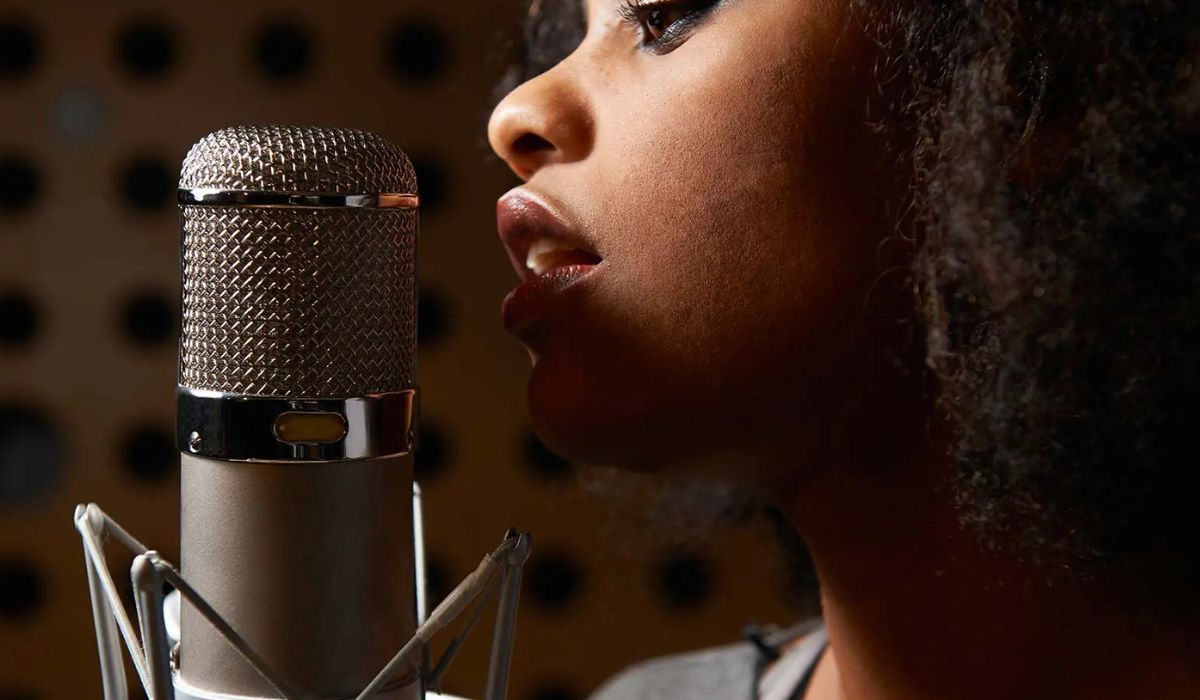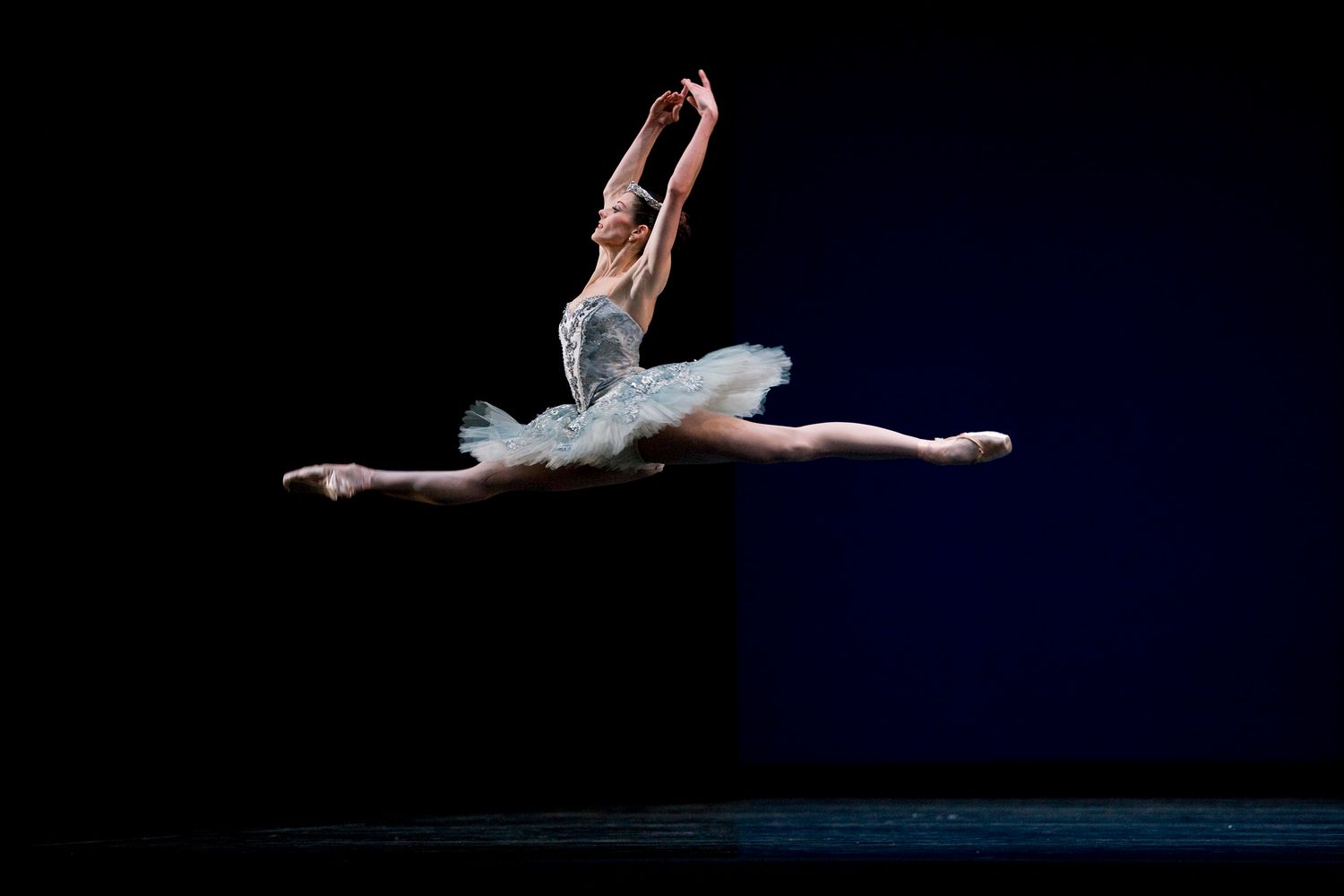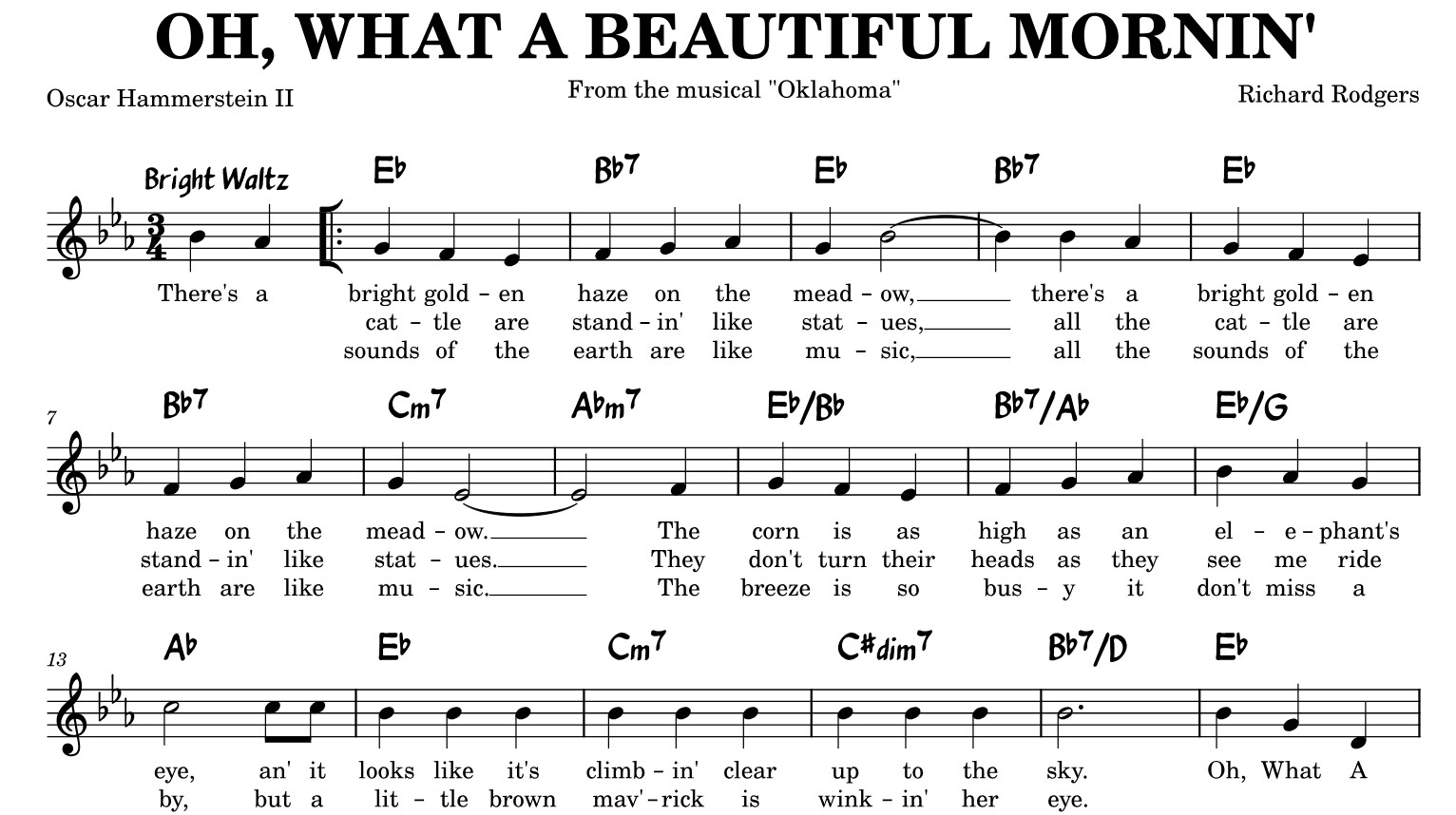Home>Instruments>Vocalist>What’s It Called When A Vocalist Uses Yeahs And Ohs


Vocalist
What’s It Called When A Vocalist Uses Yeahs And Ohs
Published: January 23, 2024
Discover what it's called when a vocalist incorporates the catchy sounds of "yeahs" and "ohs." Learn how these vocal techniques can elevate a performance.
(Many of the links in this article redirect to a specific reviewed product. Your purchase of these products through affiliate links helps to generate commission for AudioLover.com, at no extra cost. Learn more)
Table of Contents
Introduction
When listening to a catchy song or attending a captivating live performance, you might have noticed that vocalists often use repetitive phrases such as “yeahs” and “ohs” to add flair and excitement to their performance. These simple yet powerful vocal embellishments have become a staple in many genres of music, leaving listeners wondering what exactly they are called and what purpose they serve.
This article aims to demystify the phenomenon of vocalists using “yeahs” and “ohs” by exploring their meaning, historical background, popular songs that utilize them, vocal techniques involved, and the emotional impact they create. Whether you’re a fan of pop, rock, or even jazz, understanding the significance of these vocal techniques can deepen your appreciation for the artistry behind music and the role of the vocalist.
So, next time you find yourself grooving to a catchy tune or singing along to your favorite song, you’ll have a newfound appreciation for those infectious “yeahs” and “ohs” that make the music come alive.
Meaning and Purpose of Yeahs and Ohs
When vocalists incorporate “yeahs” and “ohs” into their performances, they are utilizing what are known as vocal ad-libs. These ad-libs are spontaneous vocalizations that are not part of the original lyrics and often serve as melodic and rhythmic embellishments. While they may seem simple, their addition can have a profound impact on the overall musical experience.
The purpose of using “yeahs” and “ohs” in songs can vary. In some cases, they are used to enhance the emotional impact of a particular lyric or musical phrase. By adding these ad-libs, vocalists can express a wide range of emotions – from joy and excitement to pain and longing – giving the song a more dynamic and engaging quality.
Additionally, “yeahs” and “ohs” can serve as hooks or catchy elements that listeners can easily remember and sing along to. These simple, repetitive sounds have the power to stick in our minds, making the song more memorable and increasing its potential for commercial success.
Furthermore, vocal ad-libs like “yeahs” and “ohs” can help create a sense of unity and connection between the vocalist and the audience. When performed live, these ad-libs often prompt the crowd to sing along, creating an immersive and participatory experience that amplifies the energy and excitement of the performance.
Overall, the meaning and purpose of incorporating “yeahs” and “ohs” into songs go beyond mere ornamentation. They infuse songs with emotion, enhance memorability, and foster a sense of connection between the artist and the listener.
Historical Background
The use of vocal ad-libs, including “yeahs” and “ohs,” can be traced back to the early days of popular music. These vocal embellishments have been an integral part of various genres, evolving and adapting over time.
In the realm of jazz and blues, vocal improvisation has long been a cornerstone of the genre. Artists like Louis Armstrong and Ella Fitzgerald were known for their inventive scat singing, which often included the use of “yeahs” and “ohs” to add texture and excitement to their performances.
In the rock and roll era of the 1950s, artists like Little Richard and Jerry Lee Lewis incorporated energetic vocal ad-libs into their songs, injecting a sense of wild abandon and excitement. These ad-libs, including the iconic “woo” and “yeah,” became synonymous with the rebellious spirit and raw energy of rock and roll music.
As popular music evolved, vocal ad-libs continued to be utilized by artists across different genres. In the 1960s, soul and Motown artists like James Brown and Aretha Franklin incorporated “yeahs” and “ohs” into their performances, infusing their music with passionate and emotive vocalizations.
In more modern times, the use of vocal ad-libs has become a staple in pop music. Artists like Beyoncé, Bruno Mars, and Ariana Grande use “yeahs” and “ohs” to punctuate their songs, adding flair and expressiveness to their vocal performances.
Interestingly, the use of vocal ad-libs is not limited to English-speaking artists. In various cultures around the world, artists incorporate their own cultural vocalizations into their music, utilizing similar techniques to convey emotion and engage their audiences.
Overall, the historical background of vocal ad-libs, including “yeahs” and “ohs,” spans across decades and genres, with each era adding its unique flavor and interpretation to these vocal embellishments. They have become an enduring and dynamic element of popular music, capturing the essence of different musical movements and reflecting the ever-evolving nature of the art form.
Popular Songs Utilizing Yeahs and Ohs
Throughout the history of popular music, numerous iconic songs have utilized “yeahs” and “ohs” to great effect. These vocal ad-libs have become integral components of these songs, contributing to their catchiness and memorability. Here are just a few examples of popular songs that showcase the power of “yeahs” and “ohs” in enhancing the musical experience:
- “Hey Jude” by The Beatles: This timeless classic by The Beatles features a memorable outro where the repeated “na-na-na” ad-lib creates a communal feeling, encouraging listeners to sing along and fostering a sense of unity.
- “Na Na Hey Hey Kiss Him Goodbye” by Steam: Released in 1969, this infectious anthem is instantly recognizable by its catchy “na na na na, hey hey hey, goodbye” refrain. The repetitive ad-lib adds a playful and energetic element to the song.
- “Baba O’Riley” by The Who: The opening of this iconic rock song is marked by a series of “teenage wasteland” chants, creating a powerful and anthemic atmosphere. The combination of the repeated phrase and the energetic “yeahs” that follow sets the tone for the rest of the song.
- “Yeah!” by Usher ft. Lil Jon and Ludacris: In this hip-hop and R&B hit from 2004, the title itself is a testament to the prominence of “yeahs” in the song. Usher’s exuberant ad-libs, combined with the infectious beat and catchy lyrics, make it a club favorite.
- “Don’t Stop Believin'” by Journey: As one of the most recognizable rock anthems of all time, this song features soaring vocals and an unforgettable chorus highlighted by the repetition of the words “don’t stop believin'” and the powerful “oh oh oh” ad-lib.
These songs illustrate how incorporating vocal ad-libs like “yeahs” and “ohs” can elevate a song to an entirely new level. They enhance the overall musical experience, making the songs more memorable, engaging, and enjoyable for listeners.
Vocal Techniques Involved
The incorporation of “yeahs” and “ohs” as vocal ad-libs requires specific vocal techniques to ensure their effectiveness and seamless integration within a song. Vocalists employ various techniques to maximize the impact of these ad-libs, including:
- Vibrato: Vocalists often utilize vibrato, a slight variation in pitch, to add richness and depth to their ad-libs. This technique creates a more expressive and nuanced sound, enhancing the emotional impact of the “yeahs” and “ohs.”
- Dynamic Control: Skillful vocalists modulate their volume and intensity to bring out the desired effect in their ad-libs. They may start softly and build up to a powerful exclamation or vice versa, creating contrasts in the performance and capturing the attention of the audience.
- Pitch Accuracy: Maintaining pitch accuracy is crucial when delivering ad-libs. Vocalists need to hit the right notes and intervals to ensure that the “yeahs” and “ohs” blend harmoniously with the melody and harmonies of the song.
- Timing and Rhythm: The ability to syncopate with the rhythm of the music is essential when incorporating ad-libs. Vocalists must have a keen sense of timing and be able to seamlessly interject “yeahs” and “ohs” without disrupting the overall flow and groove of the song.
- Emotional Expression: Vocalists infuse their ad-libs with the appropriate emotional intent to effectively convey the desired feeling. Whether it’s exuberance, vulnerability, or passion, the vocal delivery of “yeahs” and “ohs” adds an extra layer of authenticity and connection to the lyrics and the overall performance.
Vocalists often rely on their training, experience, and natural instincts to execute these techniques seamlessly. Mastery of these skills allows them to fully harness the power of “yeahs” and “ohs,” transforming simple vocal ad-libs into impactful and memorable moments within a song.
Emotional Impact of Yeahs and Ohs
Yeahs and ohs have the ability to evoke a strong emotional response from listeners. These simple vocal ad-libs can enhance the overall mood of a song and intensify the emotional impact conveyed through the lyrics and melody.
When a vocalist adds enthusiastic “yeahs” and “ohs” to a song, it can create a sense of joy, excitement, and celebration. The ad-libs act as expressive bursts of energy, amplifying the positive emotions conveyed in the lyrics. They become a rallying cry, encouraging listeners to embrace the moment and immerse themselves in the uplifting spirit of the song.
On the other hand, “yeahs” and “ohs” can also evoke a sense of melancholy, longing, or heartache. When delivered with a softer tone and a hint of vulnerability, these ad-libs can convey a range of emotions, tugging at the heartstrings of the audience. By adding these vocal nuances, the vocalist creates a deeper connection with the listeners, allowing them to empathize and resonate with the emotional complexity of the song.
Moreover, the repetitive nature of “yeahs” and “ohs” can intensify the emotional impact of a song. The repetition serves as a form of emphasis, driving home the sentiment or message being conveyed. It acts as a musical exclamation point, punctuating the lyrics and adding emphasis to certain phrases or moments in the song.
Listeners often find themselves drawn to songs that utilize “yeahs” and “ohs” because of the emotional release and connection they provide. These vocal ad-libs have the power to transport listeners to a specific time, place, or emotional state, allowing them to experience the full range of feelings evoked by the music and lyrics.
Whether it’s the infectious joy of a celebratory anthem or the poignant vulnerability of a heartfelt ballad, the emotional impact of “yeahs” and “ohs” cannot be understated. They add depth, nuance, and resonance to a song, enriching the listener’s musical journey and creating lasting memories.
Conclusion
The use of “yeahs” and “ohs” by vocalists as ad-libs has become a timeless technique in the world of music. These vocal embellishments serve a variety of purposes, including enhancing emotional impact, increasing memorability, and fostering a connection between the artist and the audience.
Throughout history, vocal ad-libs have been utilized by artists across genres, from jazz and blues to rock and pop. They have evolved and adapted to reflect the changing landscape of popular music, yet they remain a powerful tool for expression and creativity.
By incorporating techniques such as vibrato, dynamic control, pitch accuracy, timing, rhythm, and emotional expression, vocalists bring depth and authenticity to their ad-libs. These skills allow them to create captivating and immersive performances, captivating listeners and leaving a lasting impression.
From iconic songs like “Hey Jude” by The Beatles to modern hits like “Yeah!” by Usher, “yeahs” and “ohs” have proven their ability to make songs instantly recognizable and memorable. They evoke a range of emotions and enhance the overall musical experience, leaving a lasting impact on both the listener and the artist.
So, the next time you find yourself singing along to a catchy tune or getting swept away by the power of a heartfelt ballad, take a moment to appreciate the artistry behind those infectious “yeahs” and “ohs.” They are not just simple vocal ad-libs, but an integral part of the music that bridges the gap between the artist and the listener.
In conclusion, the use of “yeahs” and “ohs” by vocalists brings a sense of excitement, emotion, and unity to songs. They have stood the test of time and continue to be an integral element in the ever-evolving landscape of popular music.











